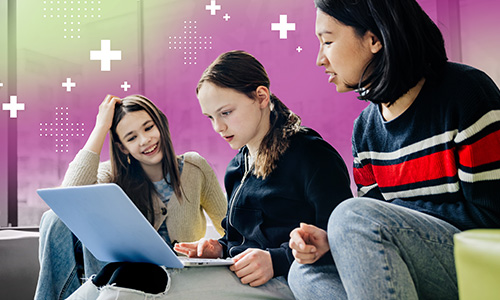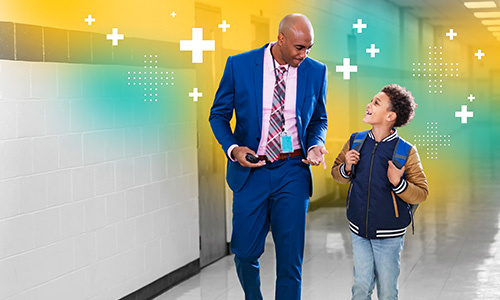My son and three of his fellow seventh-graders were working together on a math assignment the other day. They had recently been introduced to two-step equations. They had cards with an equation written on each and had been tasked with working together to sort the cards into three categories: equations with one solution, infinite solutions, and no solution. Initially, my son and his teammates divided up the cards and each worked on a few. They planned to check each other’s answers. However, they quickly realized that they needed more help and started working through each equation together while they waited for their teacher to check in with them.
This is a good example of flexible grouping, a pedagogical approach that can work well even during distance learning. Like most of my son’s math lessons this year, the task and the interactions were done entirely remotely using digital tools. Our district math curriculum relies heavily on students working together, and my son’s teacher has done a good job of allowing for collaborative work whether students are attending school in person or from home.
Using flexible grouping strategies can be a great way to keep kids engaged in learning, empower students to own their learning, increase understanding through collaboration, and allow for social connections many kids need right now.
What is flexible grouping?
Flexible grouping is a teaching practice in which students work in a small group with other students temporarily and for a specific purpose. Groups should change as skills are learned or learning activities are completed, based on student needs.
Working together provides students with an opportunity to learn from and with each other; students learn from hearing the perspectives of other students. Talking through their work often helps clarify their own thinking. For you as the teacher, listening in on the groups can provide valuable insight into a student’s level of understanding of a concept or skill. At its best, flexible grouping provides opportunities for students to grow academically and addresses their social and emotional needs.
The key to keeping groups flexible and effective is to have a clear purpose for using groups within a lesson. The purpose will then help guide decisions such as:
- Who will be in each group
- What work is taking place in each group
- What materials are needed
- When the groups will meet and for how long
For example, if the purpose of the groups is for students to work with others at a similar level of skill, then the groups may be formed using assessment and classroom data and may only meet for a short period of time while that skill is being practiced. For a lesson in which the purpose of the groups is to allow for discussion of the topic, groups may be formed based on student interest indicated on an exit ticket done as a chat or poll in a virtual classroom, and then the groups may meet only once for the discussion.
Examples of flexible grouping in action
Essential for all groups are high expectations both in the level of academic work and each student’s level of participation. Here are some examples of what flexible grouping could look like in your classroom, regardless of grade level.
- In math class, students work in small groups on a scaffolding activity to help them prepare for an upcoming grade-level lesson that the whole class will be learning together. Students are grouped with others who have a similar current level of understanding so the teacher can work with each group on their particular needs. The formative data the teacher observes from this small-group work can also help to inform additional scaffolding needs to weave into the whole class lesson.
- In science class, students work in groups of four for a week on a scientific investigation focused on the concepts they are learning. Because the group is working together over multiple days, students have selected roles within each group—for example, timekeeper, recorder, facilitator, and materials manager—so that each student is actively involved in the process. Prior to the investigation, students are given a chance to make a hypothesis about the outcome; groups are formed so students can work with others who had a similar hypothesis. They then work together to prove or disprove their ideas.
- In art class, students work in groups of varying size to complete a project. Students select which project they want to work on. Group sizes are largely determined by the amount of materials available for each project. Students work together so they can share materials and directions as they complete their art. If your school is 100% remote, kids can meet in virtual groups.
- In language arts, students work with a partner to edit an essay they each wrote in a previous lesson. You assign partners based on who is likely to work well together and how well students may support each other’s work based on their writing from the day before. A rubric is provided to help the students focus on the skills the essay is intended to allow them to practice as they edit. If the work is being done virtually, each student’s essay can be in a shared document that their partner can access and add comments in to share their feedback. You should also have access to each document to be able to review the comments and add additional feedback that can help both students strengthen their writing skills.
Designed to help
As we near the one-year anniversary of school closures due to COVID-19, I’m sure you’re beyond exhausted. I hope you find flexible grouping to be an easy-to-use practice that can save you time and keep your students engaged.









